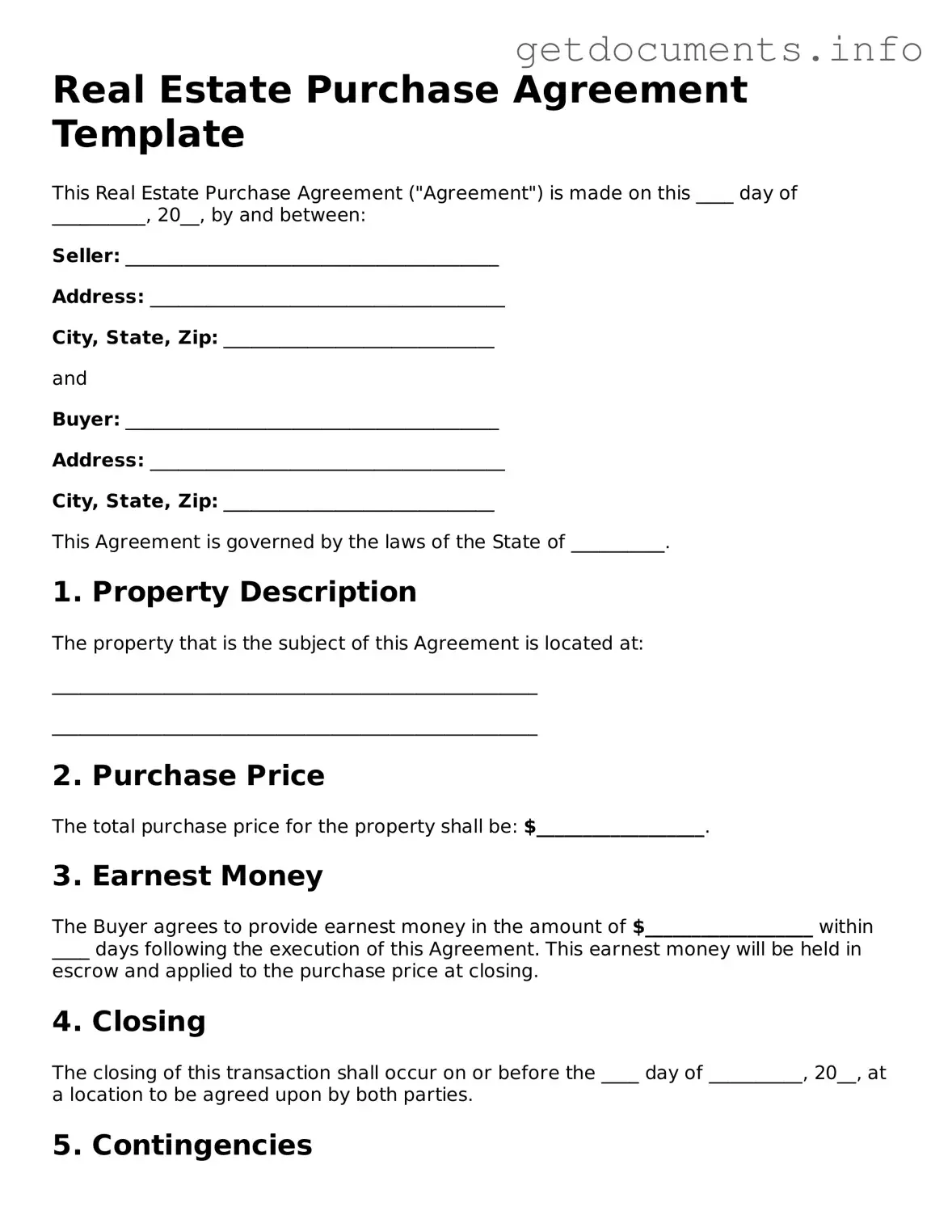Printable Real Estate Purchase Agreement Document
The Real Estate Purchase Agreement form is a legally binding document that outlines the terms and conditions of a real estate transaction between a buyer and a seller. This agreement serves as a roadmap for both parties, detailing essential elements such as the purchase price, property description, and closing date. Understanding this form is crucial for ensuring a smooth transaction; fill out the form by clicking the button below.
Access Real Estate Purchase Agreement Editor
